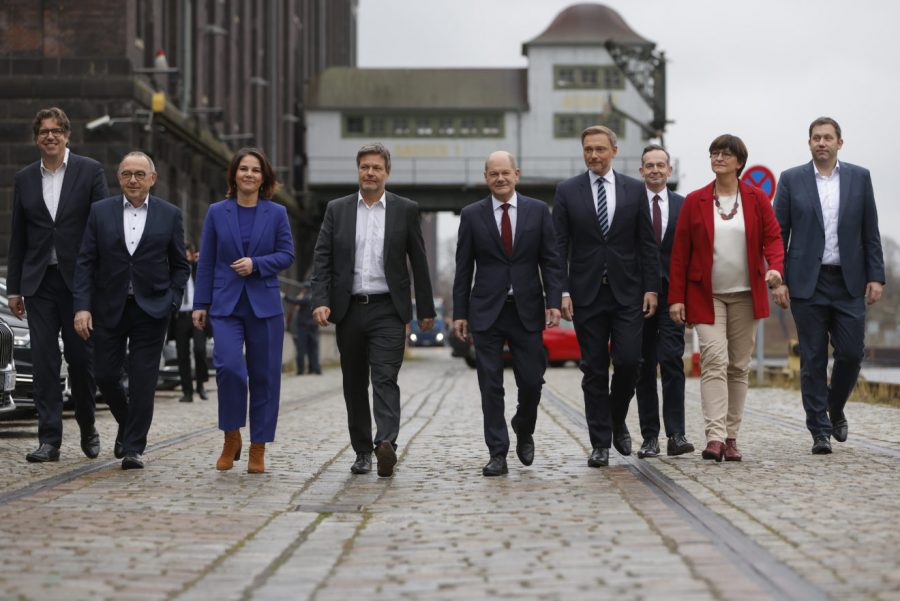Germany’s New Government Has Big Plans for the European Union
December 2, 2021
A little over two months ago, Germans went to the polls to choose their representatives in the Bundestag, which acts as the nation’s legislative branch. The results caused the once-dominant center-right CDU to lose their position as the largest political party. This spot was take by the center-left SPD, who received more than a quarter of all votes cast.
Twenty-five percent is (of course) not a majority. As a result, the SPD needs the cooperation of some smaller parties. The parties that are the most similar to each other often end up being the ones to form a government. In this case, the Coalition Agreement (the signed document outlining the collective goals of the parties) was signed by the SPD, die Grünen, and the FDP.

Just a few days ago was the agreement signed. It outlines the three parties’ vision for the future, and the plans they intend to propose for this future to become a reality. While the agreement proposed noticeable changes to the country’s environmental policy and suggested lowering the voting age to 16, the boldest section of the agreement surrounded foreign affairs.

Annalena Baerbock, leader of the Greens (die Grünen), will become the federal government’s Foreign Minister. Her position in the new government is likely why this section of the Coalition Agreement was the most ambitious.
A section of the document states that the annual gathering of citizens that provides input to the European Parliament “should culminate into a constitutional convention and further development of a federal European state”. In layman terms, this agreement calls for the transformation of the European Union, with 27 members, into a single state with certain powers devolved to lower levels of government.

Belgium’s former PM, Guy Verhofstadt, wrote that “the balance in this agreement is laudable and promising. In today’s world, a stronger Europe is necessary, and a more democratic Europe is the necessary result.”
On the rest of the continent, support is mixed. France, the second largest nation on the continent, has been describe as having “an unusually ‘European’ president”. Italy’s prime minister used to work for the European Union, and he has broadly positive views on integration. Hungary and Poland would likely be the most resistant to such change, but elections in either could bring their resistance to an end.

In 1993, German and French leaders transformed a simple trade union into a full-fledged political union, complete with popular elections and multiple branches of government. While the unanimity requirement has caused many popular proposals to fail, it’s time may be coming to an end.
In 1993, politicians on the continent were able to make big change a reality. Many are hopeful that the same wind will sweep through governments once more. While the problems of the world won’t solve themselves, Verhofstadt supposes that “just maybe, shortly, finally, Europe’s greatest weakness will no longer be the politicians leading it”.
Bibliography:





